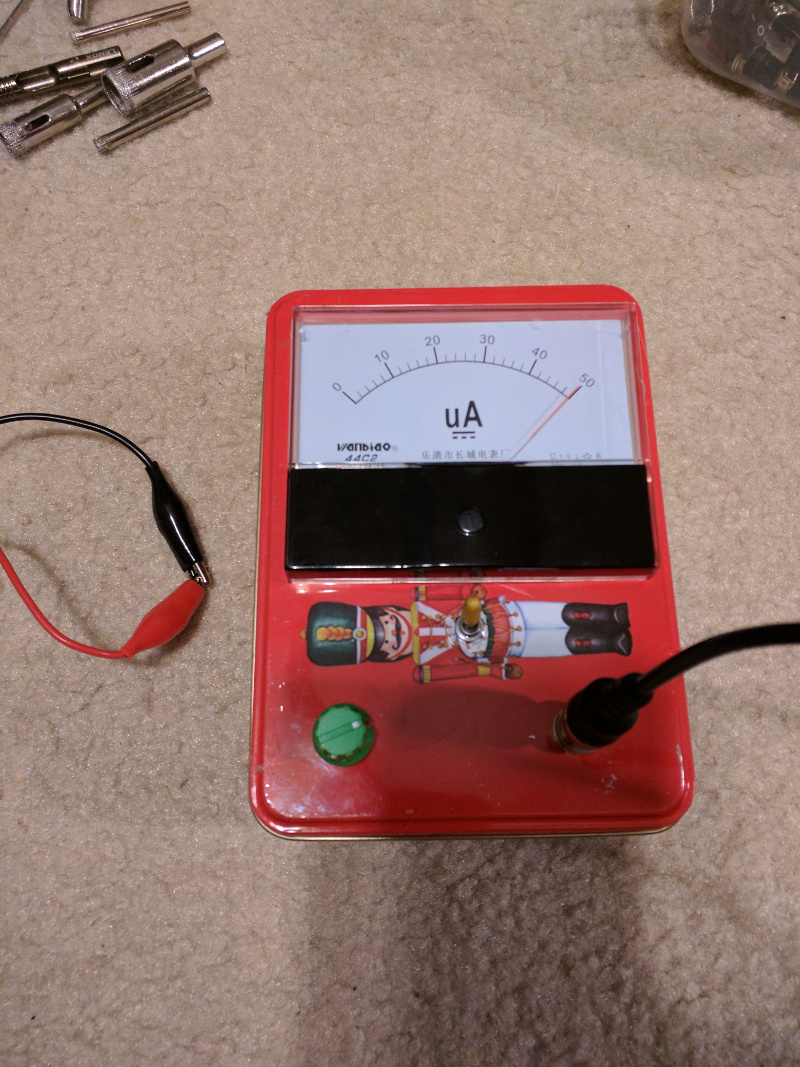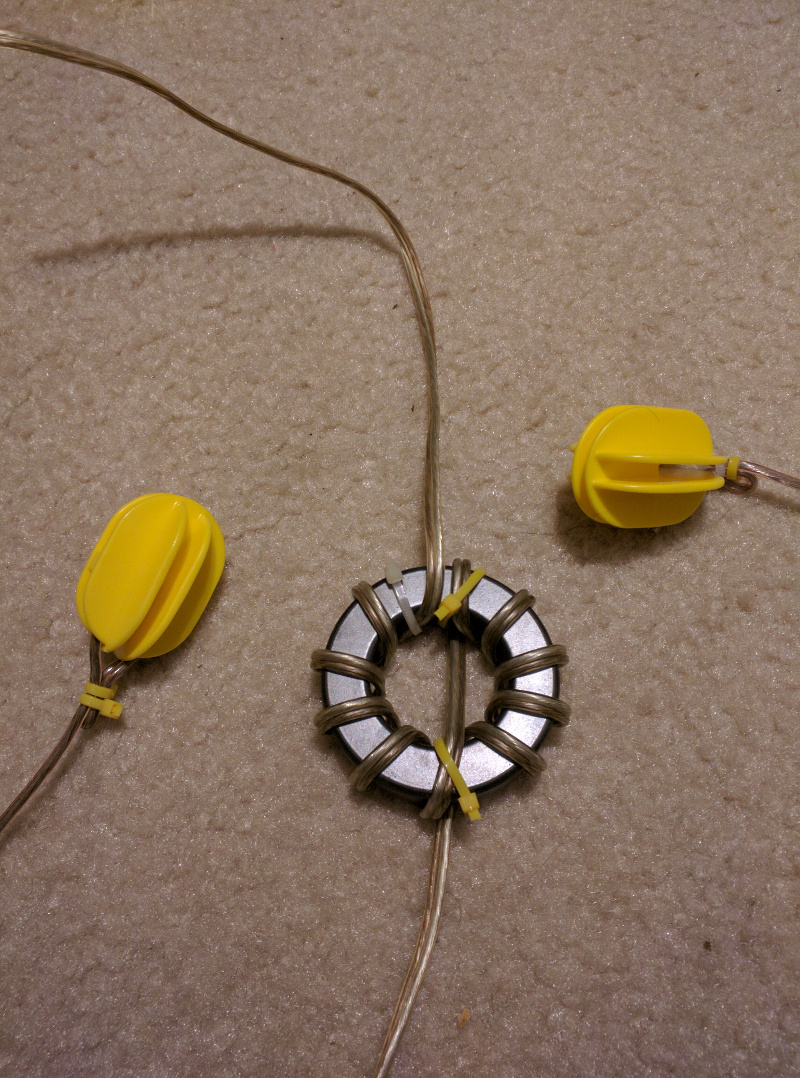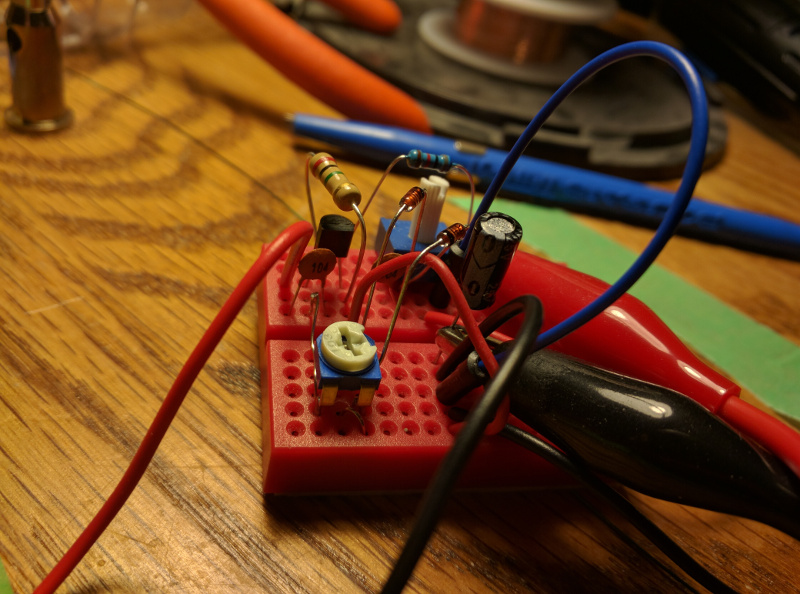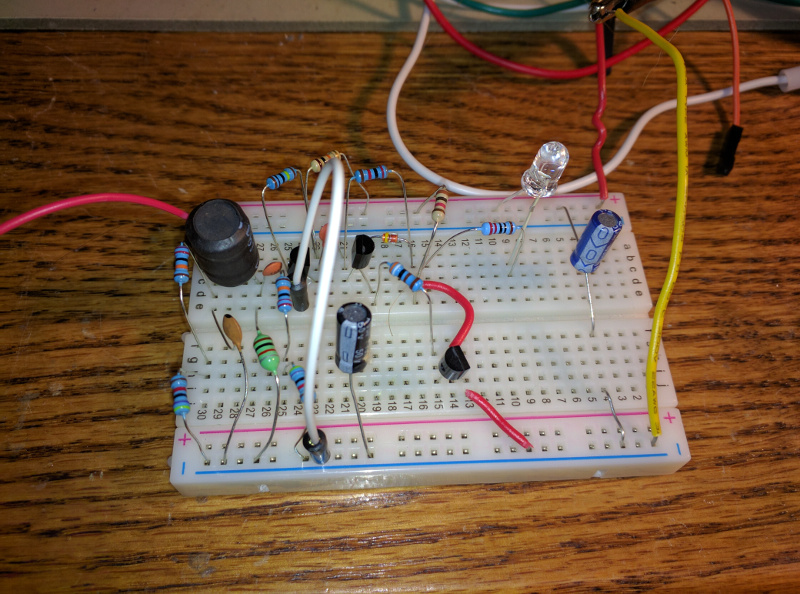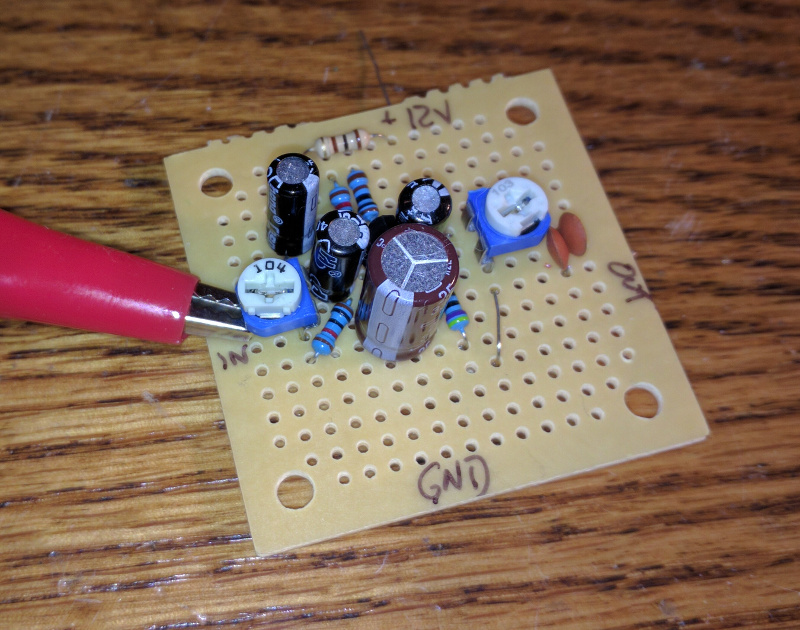Another piece of test gear that I’ve been needing for a while is an ESR meter.
W2AEW has a video on his youtube channel about a simple 5 transistor ESR meter that was designed by an eevblog forum user.
I had everything I needed to build it except for a 50uA meter, but ebay had plenty for a few bucks.
The schematic is below, but I’d really suggest watching W2AEW’s video where he walks through the circuit and explains it in detail.
I haven’t posted much in the last month or so, but I have been working on a few projects.
One of them involves the 20 meter band and my quick attic antenna wasn’t cutting it, so I put together a new one made from speaker wire.
I wound a proper balun on an FT240-43 and connected one end to the coax running down through the wall.
I used some electric fence insulators for the ends and I strung it up in the attic.
I used to play the guitar a lot when I was younger, but haven’t done much since my kids were born. I recently pulled out all of my gear and thought it might be fun to try to make my own effects pedal.
I came across an article on building your own stompboxes and thought I’d give it a shot. Here is the schematic from the article.
I built the circuit on a small breadboard.
A few weeks back, I ordered a Russian sbm-20 Geiger tube and it finally came in. The tube runs on 400v and will emit a pulse when it detects ionizing radiation.
Due to the Townsend avalanche phenomenon the tube is able to register a significant pulse from even a single ionizing event.
To test the tube, I needed to build a 400 volt power supply. The simplest and quickest way to do that (with what I had on hand) was to make a simple switching supply using an arduino to supply a pulsing dc voltage to an irf840 mosfet.
I came across an interesting site by Charles Wenzel called techlib.com. His site contains a lot of interesting projects. The first one that caught my eye was the various lightning detector circuits.
There is a lot more detail on the techlib site, including the theory behind the detector and test circuits along with other cool projects, so I’d encourage you to take a look.
Here is the schematic for the detector that I built.
I’m still tinkering around with my superhet receiver. The plan is to eventually turn it into a full transceiver, but I keep getting sidetracked.
I did knock together a mic amp based on one of n6qw’s designs.
Here is the schematic.
Here is how it turned out.
It seems to work okay. I connected my d104 mic to it and hooked it up to the scope and the scope pattern looks good.
